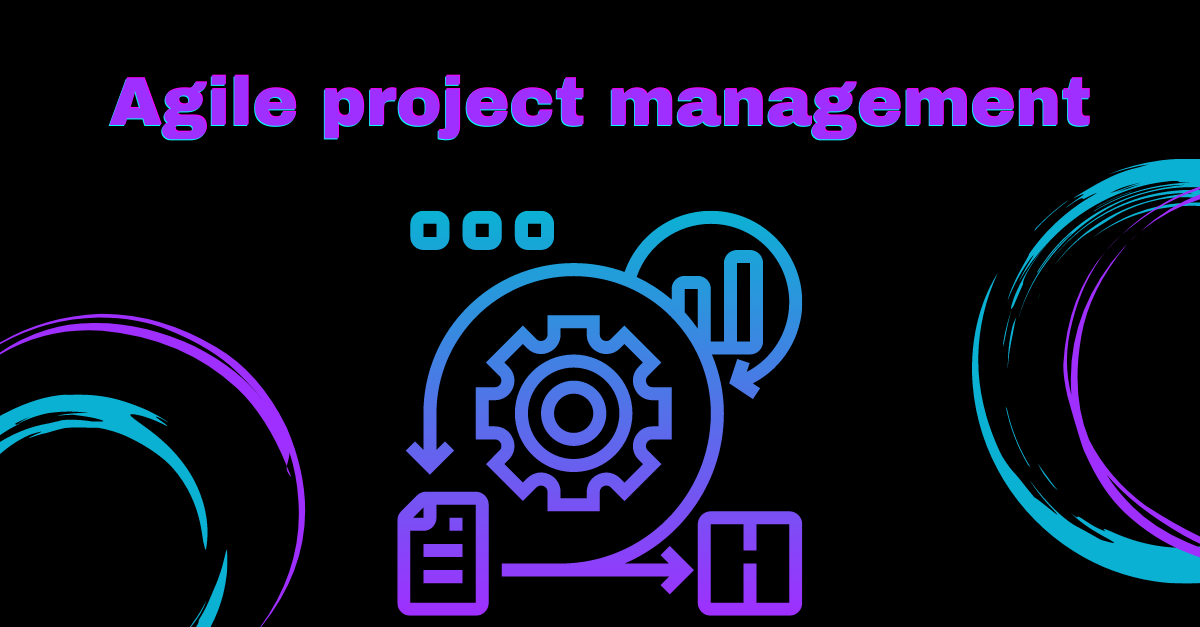Agile Project Management
Agile project management has revolutionized how projects are managed in today's fast-paced and dynamic business world. It offers a flexible and iterative approach that enables teams to efficiently adapt to changes and continuously deliver value.
What You Need to Know
- Agile project management promotes flexibility and continuous improvement.
- Agile software development uses specific methods like Scrum and Kanban.
- Agile work is based on five principles and ten practices.
- There are significant differences between traditional and agile project management.
- Agile project management offers many advantages but also comes with challenges.
What is Agile Project Management?
Agile project management is an approach that emphasizes flexibility, collaboration, and iterative processes. It aims to deliver projects in small, manageable segments that are regularly reviewed and adjusted. This approach allows teams to respond quickly to changes and continuously improve.
The 5 Principles of Agile Work
- Individuals and interactions over processes and tools.
- Working software over comprehensive documentation.
- Customer collaboration over contract negotiation.
- Responding to change over following a plan.
- Continuous improvement and adaptation are essential.
The 10 Principles of Agile Project Management
The principles of agile project management provide a guide for teams on how to implement projects efficiently and effectively. Here are the ten principles in detail:
- Customer satisfaction through early and continuous delivery of valuable software: The main goal of agile project management is to delight customers through regular and early deliveries. This ensures that the customer always receives the maximum benefit and can provide feedback early.
- Accept changes even late in development: Changes are inevitable and should be seen as opportunities. Agile methods enable teams to respond flexibly to changes, even if they occur late in the development process.
- Deliver working software regularly within a few weeks or months: Short, iterative development cycles (sprints) ensure that working software is regularly delivered, allowing for continuous improvement and adjustment.
- Business people and developers must work together daily: Close collaboration between the business team and developers is crucial for the success of a project. This promotes a better understanding of requirements and efficient implementation.
- Motivate individuals and trust them to get the job done: Teams should consist of motivated and self-organized individuals who have the freedom and trust to do their work independently.
- Face-to-face communication is the most effective way to convey information: Direct communication is key to a successful project. It minimizes misunderstandings and promotes faster decision-making.
- Working software is the primary measure of progress: The progress of a project is measured by the delivered, working software, not by documentation or reports.
- Agile processes promote sustainable development: Agile methods aim to establish a constant development rhythm that can be maintained over longer periods without overburdening team members.
- Continuous attention to technical excellence and good design: Quality is at the heart of agile projects. Through continuous improvement and focus on good design, the long-term maintainability and scalability of the software are ensured.
- Simplicity – the art of maximizing the amount of work not done – is essential: Simple solutions are often the best. Agile project management strives to avoid unnecessary work and focus on what is essential.
Comparing Traditional and Agile Project Management
| Feature | Traditional Project Management | Agile Project Management |
|---|---|---|
| Approach | Linear and sequential | Iterative and incremental |
| Flexibility | Low | High |
| Customer Involvement | Limited | High |
| Change Management | Difficult | Expected and integrated |
Advantages of Agile Project Management
Agile project management offers a variety of advantages, including increased flexibility, better collaboration, and faster response times. Teams can quickly respond to feedback and make continuous improvements, leading to higher customer satisfaction and more efficient projects.
Another key advantage of agile project management is increased transparency. Through regular meetings and reviews, all stakeholders have a clear overview of project progress at all times. This not only fosters trust within the team but also with stakeholders, as they are always informed about the current status. Additionally, agile work allows for early identification and addressing of risks, so potential issues can be quickly resolved before they seriously impact the project's progress.
Challenges and Risks
While agile project management offers many benefits, there are also challenges and risks. These include the need for high discipline, the risk of scope creep, and the challenge of fully integrating agile principles. It is important to find a balance between flexibility and structure.
Additionally, there are specific challenges and risks that can arise in agile project management:
- Team coordination and communication: Since agile work relies heavily on teamwork and communication, coordinating distributed teams or remote work can be a challenge. Regular and effective communication is crucial.
- Unclear roles and responsibilities: In agile teams, there can sometimes be confusion about roles and responsibilities. It is important that all team members clearly understand their tasks and responsibilities.
- Stakeholder engagement: Agile project management requires close collaboration with stakeholders. This can be time-consuming and requires active participation and engagement from stakeholders.
- Over-adaptation: While flexibility is an advantage of agile project management, excessive adaptation to changes can lead to a loss of focus and direction. It is important to find a balance between adaptation and goal orientation.
- Insufficient resources: Agile work often requires specific tools and training. A lack of resources or support can hinder the success of agile projects.
Overview of Methods and Techniques
There are various agile methods used in practice. The most well-known include Scrum, Kanban, and Extreme Programming (XP). Each method has its own techniques and tools that help teams work efficiently and continuously improve. Here are the main methods in detail:
Scrum
Scrum is one of the most widely used agile methods and is particularly suitable for complex projects with rapidly changing requirements. Scrum is based on short, fixed time periods called sprints, usually lasting two to four weeks. At the end of each sprint, a working product increment is delivered. Scrum promotes regular meetings, including daily stand-ups, sprint planning, sprint reviews, and sprint retrospectives, to monitor progress and ensure continuous improvement.
h4> Kanban
Kanban is a visual method aimed at optimizing workflow and identifying bottlenecks. In the Kanban system, tasks are represented on a Kanban board, which is divided into columns representing different phases of the work process (e.g., "To Do", "In Progress", "Done"). Teams can limit the number of tasks being worked on simultaneously to avoid overload and focus on the most important tasks. Kanban is particularly useful for continuous processes and allows for flexible adaptation to changing requirements.
Extreme Programming (XP)
Extreme Programming (XP) is an agile method that focuses heavily on technical excellence and good programming practices. XP promotes short development cycles, continuous integration, comprehensive testing, and frequent releases. Key techniques of XP include Pair Programming, where two developers work together at one computer, and Test-Driven Development (TDD), where tests are written before the actual code. XP places great importance on feedback and adaptability to ensure that the software meets the highest quality standards and customer requirements.
Roles in Agile Project Management
In agile project management, there are specific roles that are crucial to the success of a project. These include the Product Owner, the Scrum Master, and the development team. Each has specific responsibilities and contributes to the project's success.
The Product Owner is responsible for clearly defining and prioritizing the product vision and requirements. They act as a link between the development team and the stakeholders, ensuring the team works on the most important tasks that deliver the greatest value to the company.
The Scrum Master acts as a coach and supporter of the team. They help to remove obstacles that could hinder the team's progress and ensure that Scrum practices and principles are followed. The Scrum Master promotes self-organization and continuous improvement within the team.
The development team consists of professionals with different skills who work together to achieve the project goals. The team is self-organized and responsible for delivering the agreed results within the sprint. Each team member brings their expertise to collaboratively develop high-quality products.
Agile Project Management in Software Development
Agile project management plays a particularly important role in software development. Agile software development allows teams to respond quickly to changes, continuously deliver functioning software, and improve the quality of end products. By using agile methods, software development teams can work more efficiently and effectively.
At NORTH IT GROUP, we rely on agile project management and agile methods to provide the best solutions for our clients. Would you like to learn more about how we can help you make your projects more efficient and successful? Contact us today and let's achieve your goals together!
Image source: canva.com



